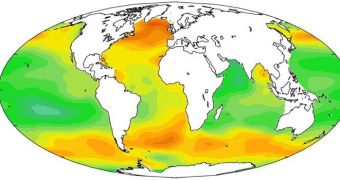A group of scientists with the Antarctic Climate and Ecosystems Cooperative Research Center, in Australia, will soon have access to an underwater laboratory that will enable them to assess the effects of ocean acidification on marine ecosystems and habitats. The facility will be installed over the next few weeks, in the waters off the Tasmanian coast.
The work is led by Australian Antarctic Division marine ecologist Jonny Stark, and co-leader Donna Roberts, a marine biologist at the ACECRC. The duo explains that their new underwater laboratory will only function in Indian Ocean waters for a few weeks. During this time, the performances of all components will be rigorously assessed.
The lab's main run and studies will take place in Antarctica later this year, so the Tasmanian leg of the project is meant to determine how all components will fare in conditions much less demanding than those at the South Pole. The laboratory consists of scientific instruments, pumps, plastic panels and hoses, all of which contribute to ocean acidification studies.
Acidification is a process caused by global warming and climate change. As more and more carbon dioxide is pumped into the atmosphere, the ocean loses its ability to properly capture and store this greenhouse gas. The extra amounts of CO2 react with water to form carbonic acid, which elevates the pH of the world's oceans ever so slightly. Over time, the effect is noticeable and very damaging.
Corals, for example, are significantly affected by acidification, since the elevated pH attacks these microscopic organisms. This leads to a phenomenon called coral bleaching, which kills off reefs and endangers the vast biodiversity that has developed around coral reefs over millions of years.
Researchers are very interested in learning how future acidification will affect marine environments. “We’re going to build a bio-dome on the sea floor with a future ocean inside it,” explains Roberts. The lab will be divided into several chambers, all of them submerged 20 meters (67 feet) below the surface, Eco Watch reports.
“In both the Arctic and the Southern Ocean the change is happening very quickly. The challenge is to understand the baseline, the natural workings of the ecosystems. Because we are now observing a system undergoing rapid change, it is crucial that we get the knowledge as soon as possible,” says Richard Bellerby, a co-leader of the upcoming Antarctic study.
“The earlier we get that, the more robust our understanding for future management to preserve these already sensitive regions,” adds the expert, who holds an appointment with the Norwegian Institute for Water Research. He was also the chairman of the recent Arctic Monitoring and Assessment Program acidification summary.

 14 DAY TRIAL //
14 DAY TRIAL //